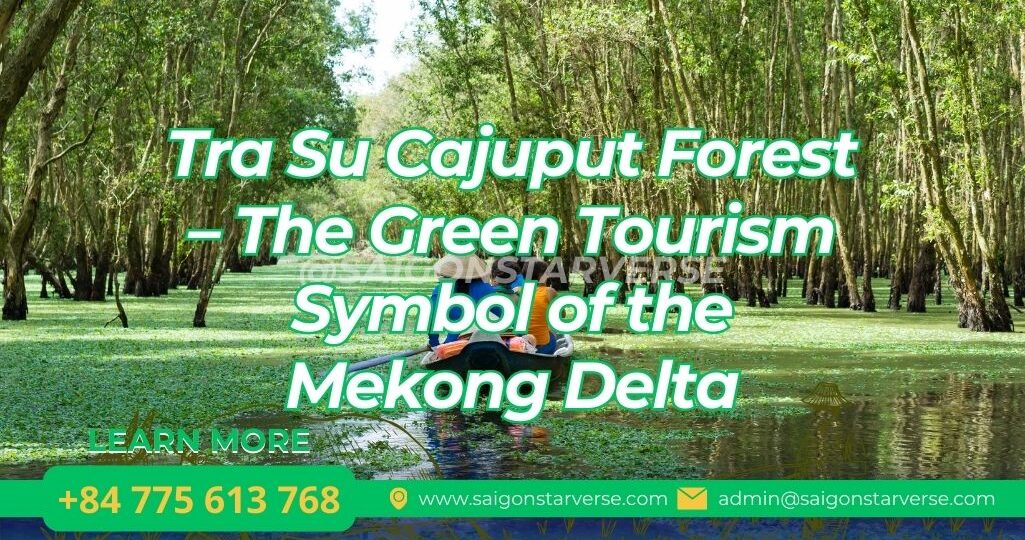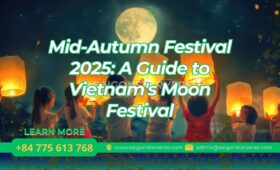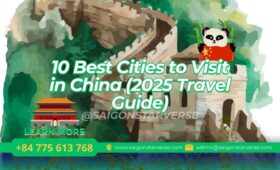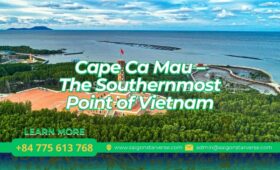Introduction
Deep in An Giang province, the Tra Su Cajuput Forest (Rừng Tràm Trà Sư) is one of Vietnam’s most celebrated eco-tourism destinations. Known for its emerald waterways covered in duckweed, towering cajuput trees, and vibrant birdlife, Tra Su has become a symbol of green tourism in the Mekong Delta.
For travelers seeking sustainability, peace, and immersion in nature, Tra Su is a perfect choice. In 2025, with upgraded facilities and eco-friendly programs, the forest continues to attract thousands of visitors each month, both domestic and international.
Why Tra Su Stands Out
- Biodiversity hotspot: Home to more than 140 species of birds, 20 species of reptiles, and countless aquatic plants.
- Scenic beauty: Famous for its flooded cajuput forest, where sampans glide over green duckweed carpets.
- Eco-tourism pioneer: One of Vietnam’s first destinations designed with sustainable tourism principles.
- Photographers’ paradise: Sunlight streaming through trees, lotus ponds, and colorful birds create endless photo opportunities.
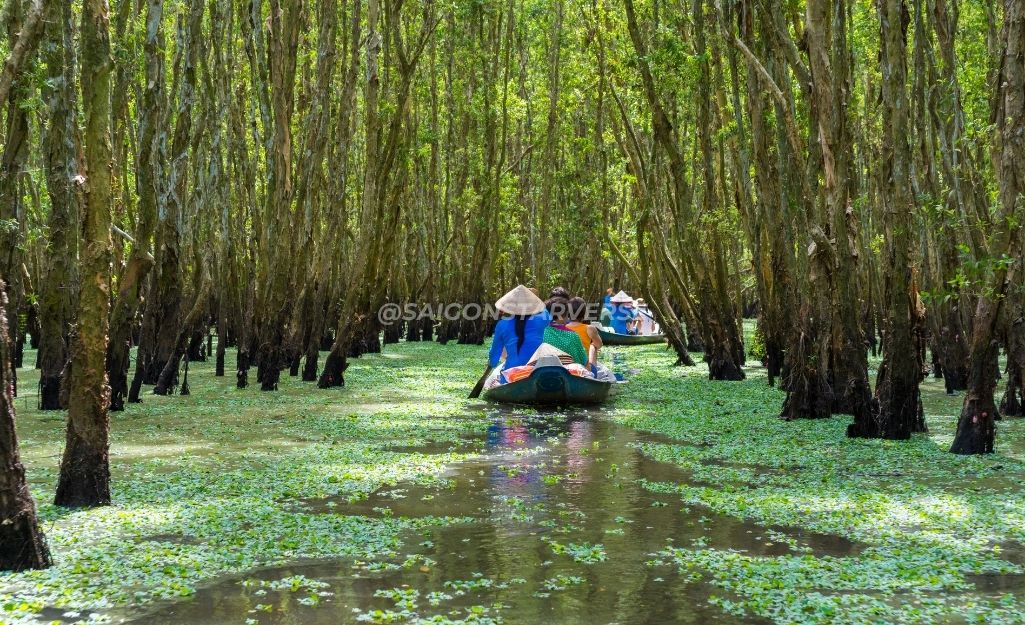
Keywords: Tra Su forest tour 2025, eco-tour Mekong Delta, bird-watching Vietnam.
The Natural Beauty of Tra Su
The Cajuput Trees
Cajuput trees rise tall and slender, their roots submerged in water for most of the year. These trees not only provide shelter for wildlife but also create an enchanting, fairytale-like landscape.
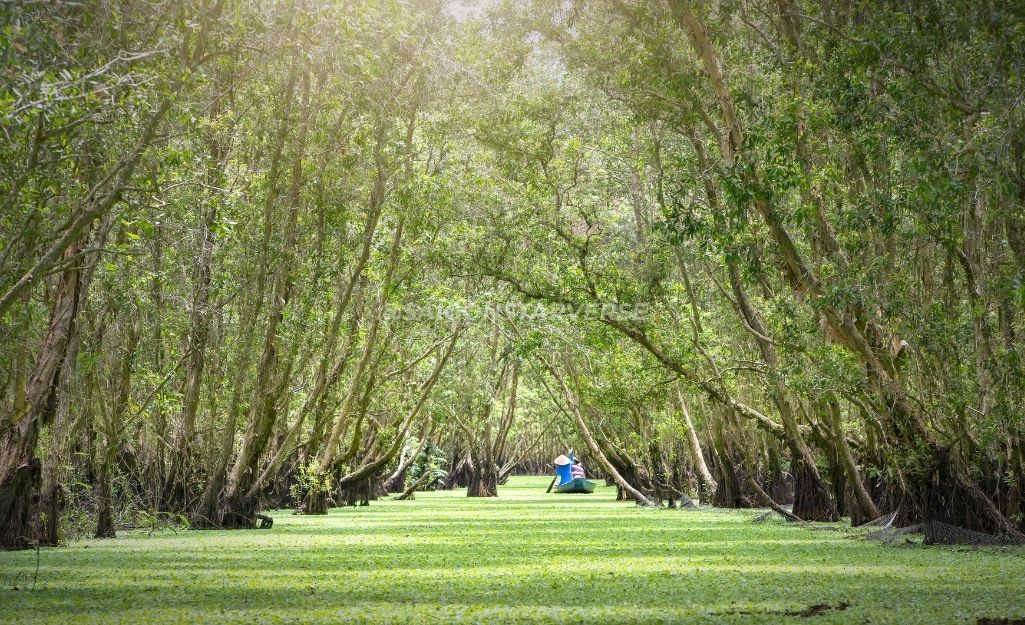
The Green Carpet of Duckweed
The forest floor is often covered with duckweed, forming a natural green carpet. Sampans gliding across these waters look like they are floating on emerald silk.
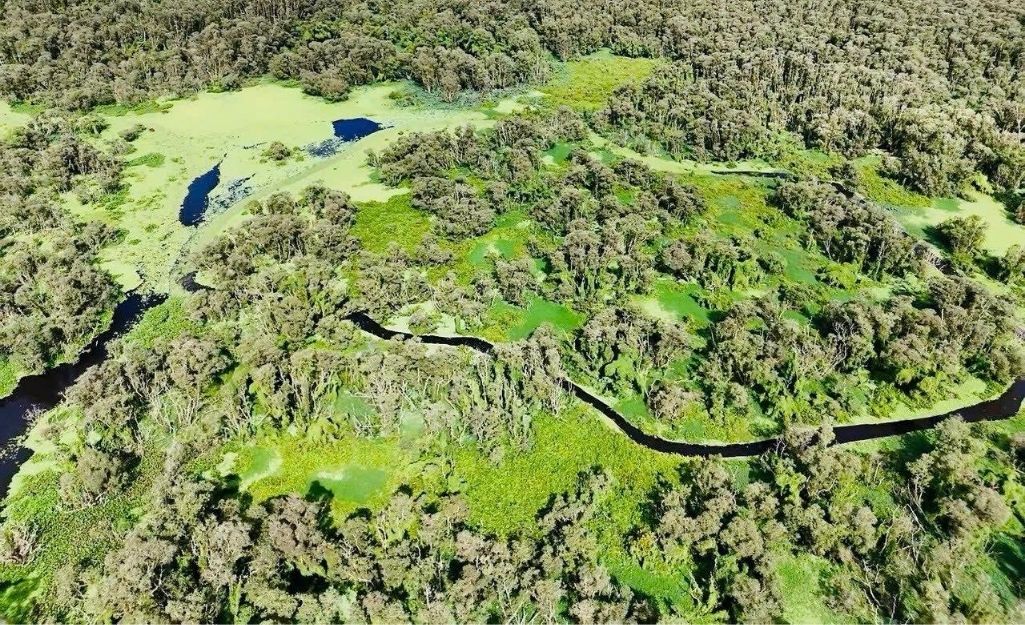
Bird-Watching Haven
Tra Su is home to storks, herons, cormorants, and rare species such as the painted stork. Visitors can climb watchtowers to see flocks of birds flying over the forest at sunset.
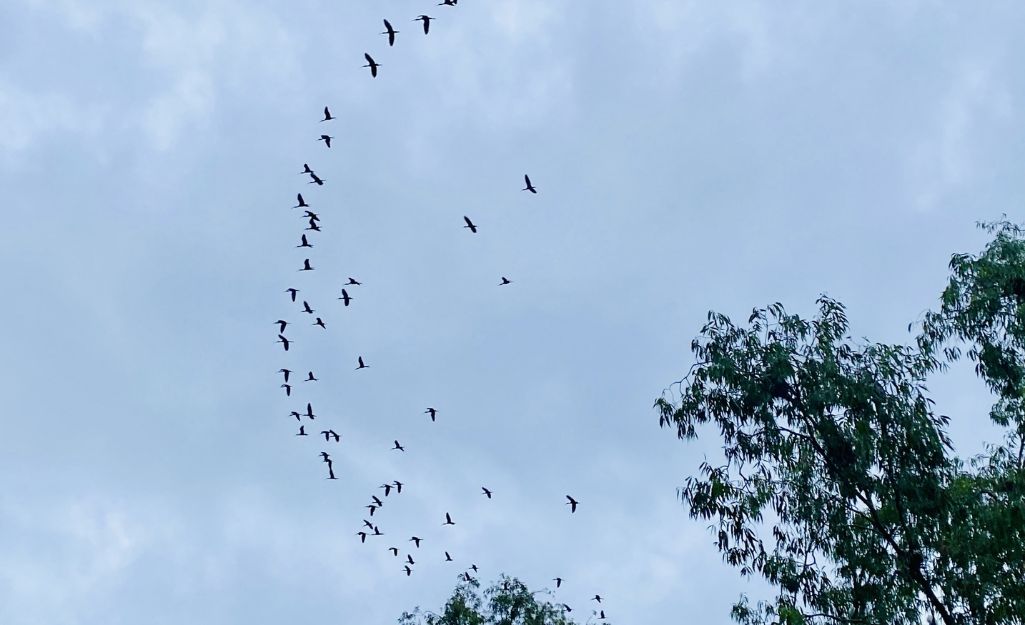
Eco-Tourism Experiences in 2025
- Sampan rides: Paddle boats guided by locals take tourists deep into the forest.
- Motorboat tours: Faster rides for larger groups.
- Observation towers: Panoramic views of the entire biosphere reserve.
- Educational tours: Learn about mangrove ecology, biodiversity, and local conservation efforts.
- Cultural immersion: Visit nearby Khmer villages, experience traditional crafts, and taste Mekong cuisine.
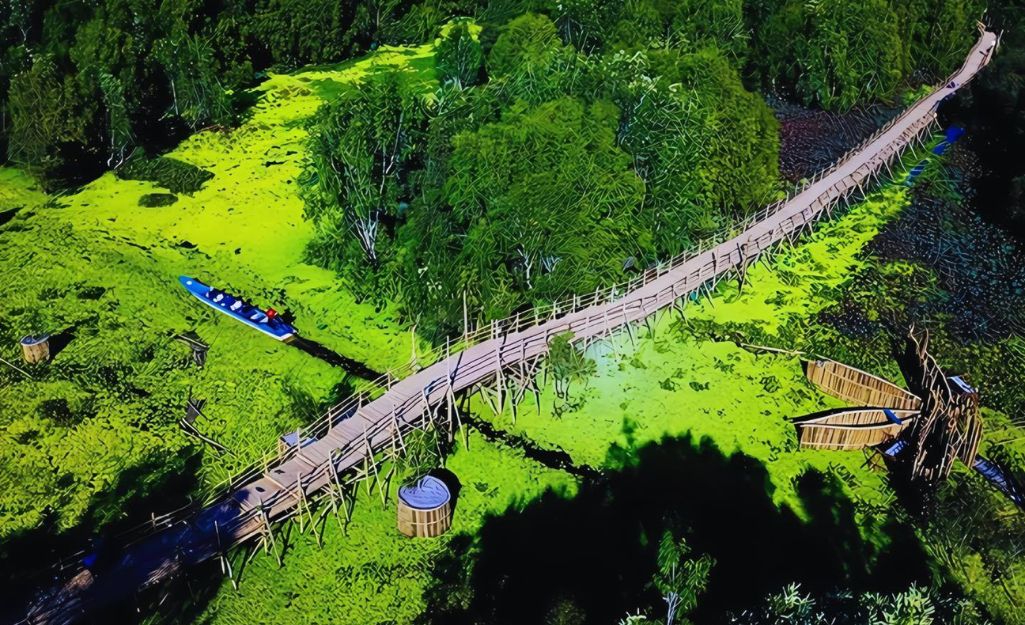
Cultural and Community Value
- Support local livelihoods: Eco-tourism creates jobs for boat rowers, guides, and homestay owners.
- Khmer heritage: Surrounding villages preserve Khmer traditions, temples, and festivals.
- Green awareness: Visitors are encouraged to plant trees and learn sustainable practices.
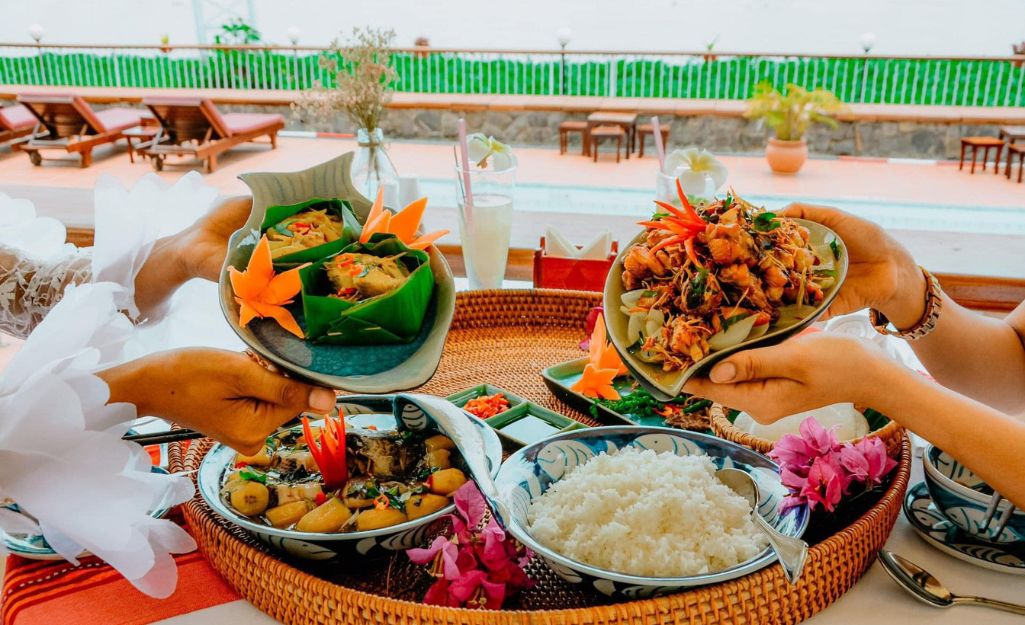
How to Visit Tra Su Forest
- Location: About 30 km from Chau Doc City, An Giang.
- Transport: From Ho Chi Minh City, it takes ~6 hours by car to Chau Doc, then 1 hour by bus or motorbike to Tra Su.
- Best time to visit: Flooding season (September–November), when water levels are high and the forest is most picturesque.
- Tickets: Affordable, ranging from $2–5 per person, excluding boat rides.
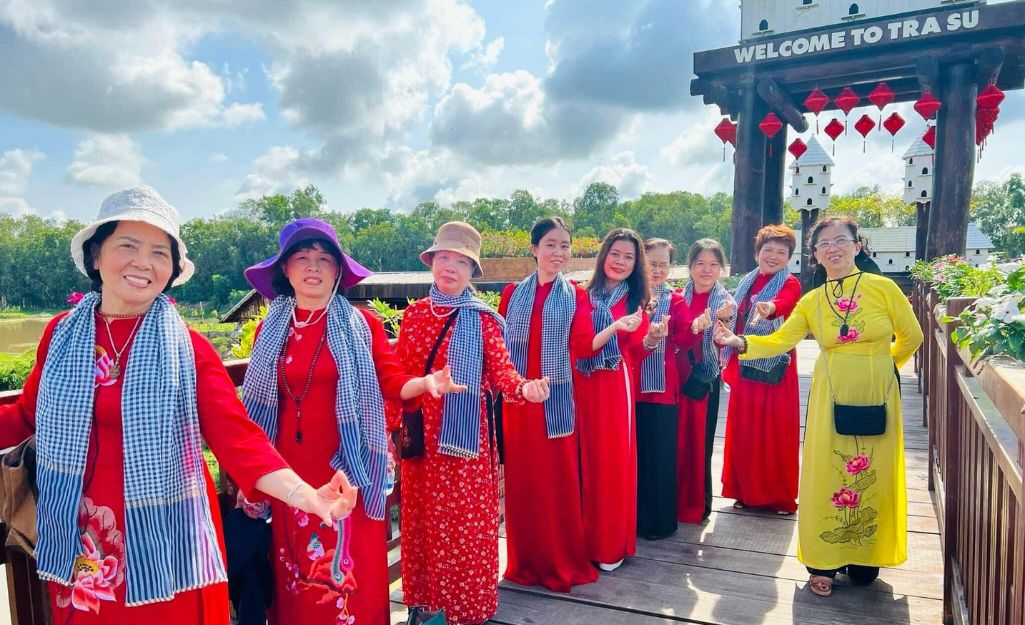
Who Should Visit?
- Nature lovers: Perfect for those who enjoy bird-watching and serene landscapes.
- Families: Safe and educational, with fun boat rides for kids.
- Photographers: A paradise of light, water, and wildlife.
- Eco-tourists: Great case study of sustainable travel in Vietnam.
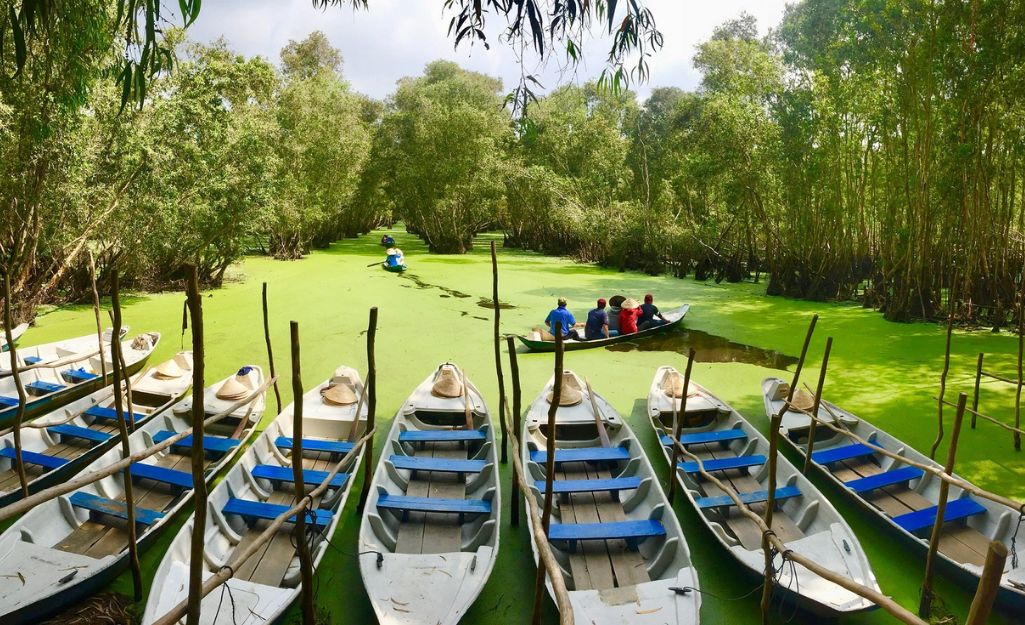
Travel Tips
- Bring binoculars and a camera with zoom lenses.
- Wear light clothing and sandals suitable for wet conditions.
- Avoid loud noises that may disturb wildlife.
- Try local dishes like fish sour soup, grilled snakehead fish, and palm sugar desserts in nearby villages.
Alt text image: “Grilled snakehead fish wrapped in lotus leaves – Mekong cuisine”
Keywords: Tra Su travel tips, Mekong Delta food, eco-tour packing list.
FAQs
Q: How long should I spend at Tra Su?
A: Half a day is ideal; many travelers combine it with Chau Doc or Sam Mountain.
Q: Is Tra Su accessible year-round?
A: Yes, but the flooding season (Sep–Nov) is most scenic.
Q: Are there eco-lodges nearby?
A: Yes, homestays and eco-lodges are available around Chau Doc and An Giang.
Conclusion – Vietnam’s Green Jewel
The Tra Su Cajuput Forest is more than a tourist attraction; it is a living laboratory of biodiversity and a beacon of sustainable tourism. With emerald waterways, rare birds, and eco-friendly experiences, Tra Su represents the Mekong Delta’s promise to protect its nature while sharing it with the world.
In 2025, Tra Su continues to shine as Vietnam’s symbol of green tourism – a must-visit destination for any traveler seeking authenticity, beauty, and peace.
📞 Hotline/Zalo/WhatsApp: +84 775 613 768
📧 Email: admin@saigonstarverse.com
🌐 Website: www.saigonstarverse.com

